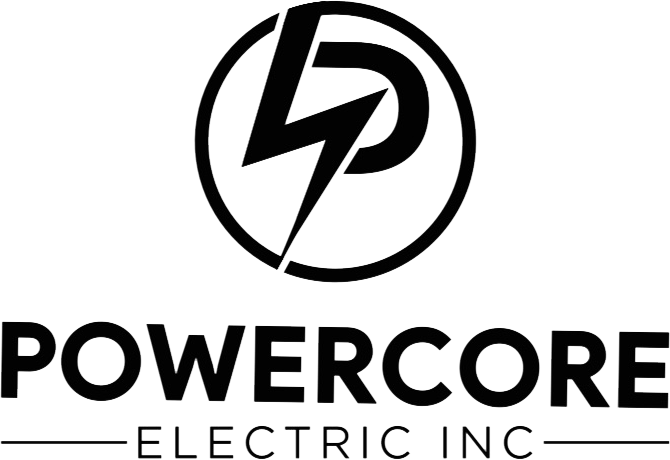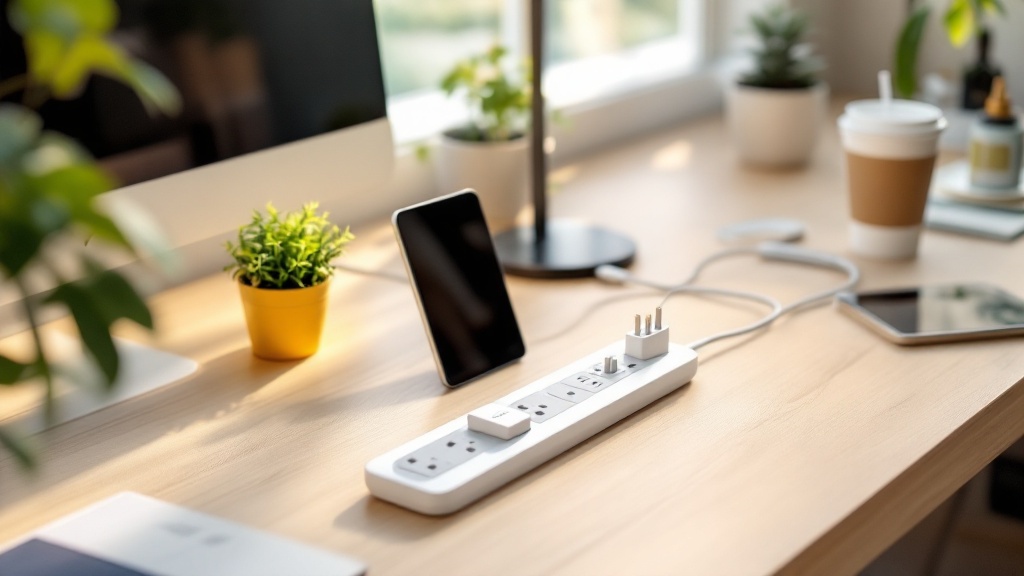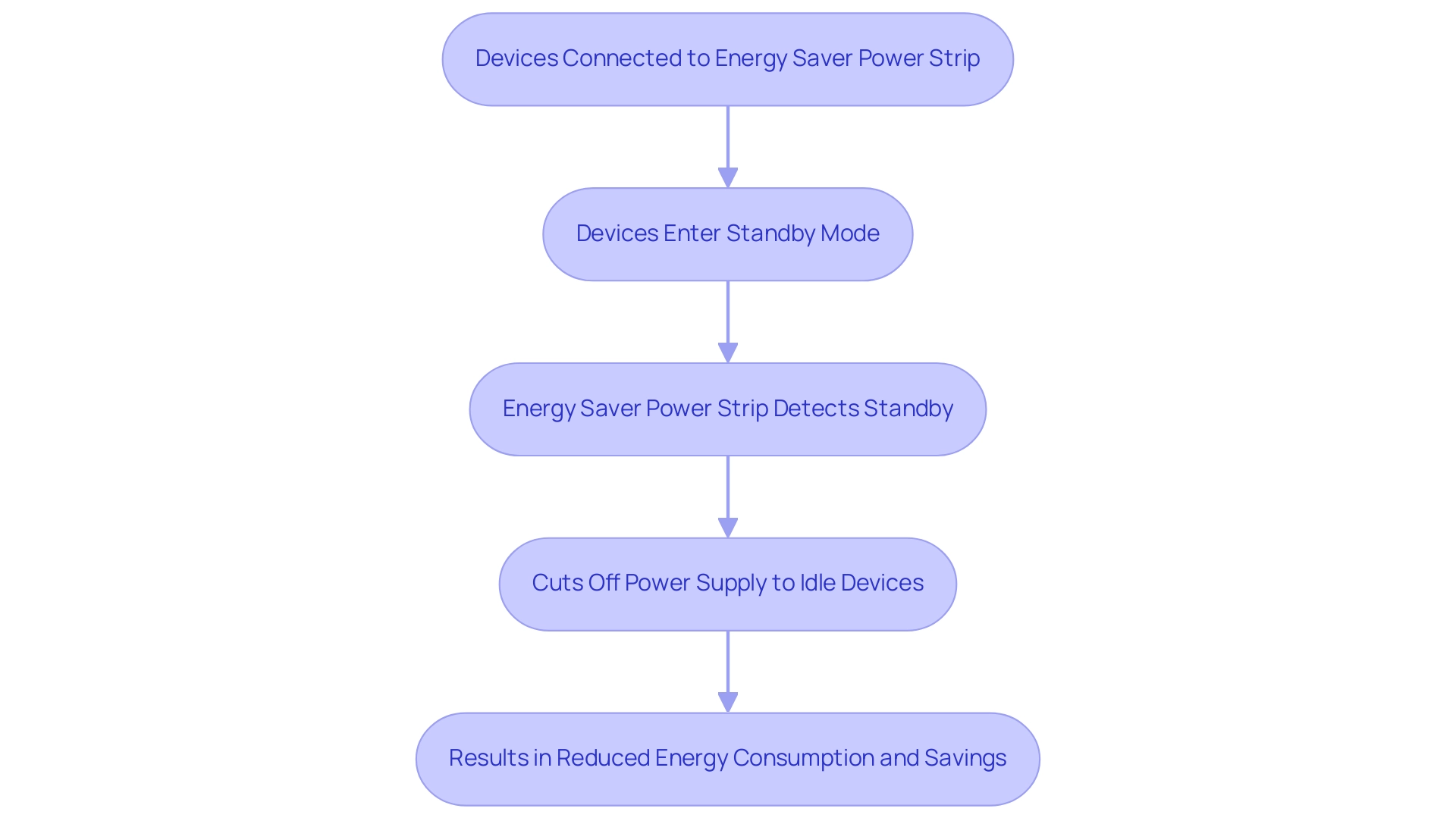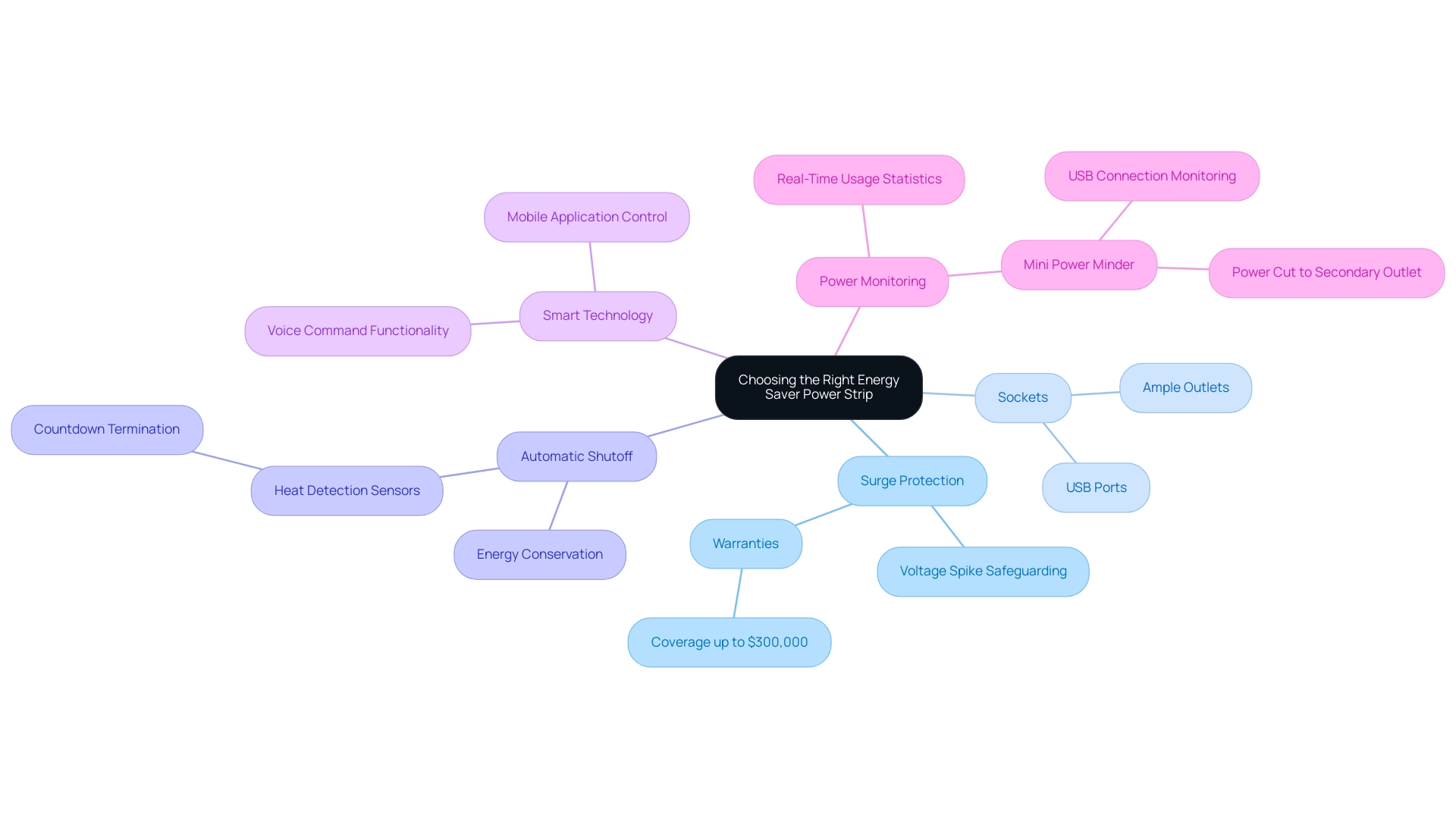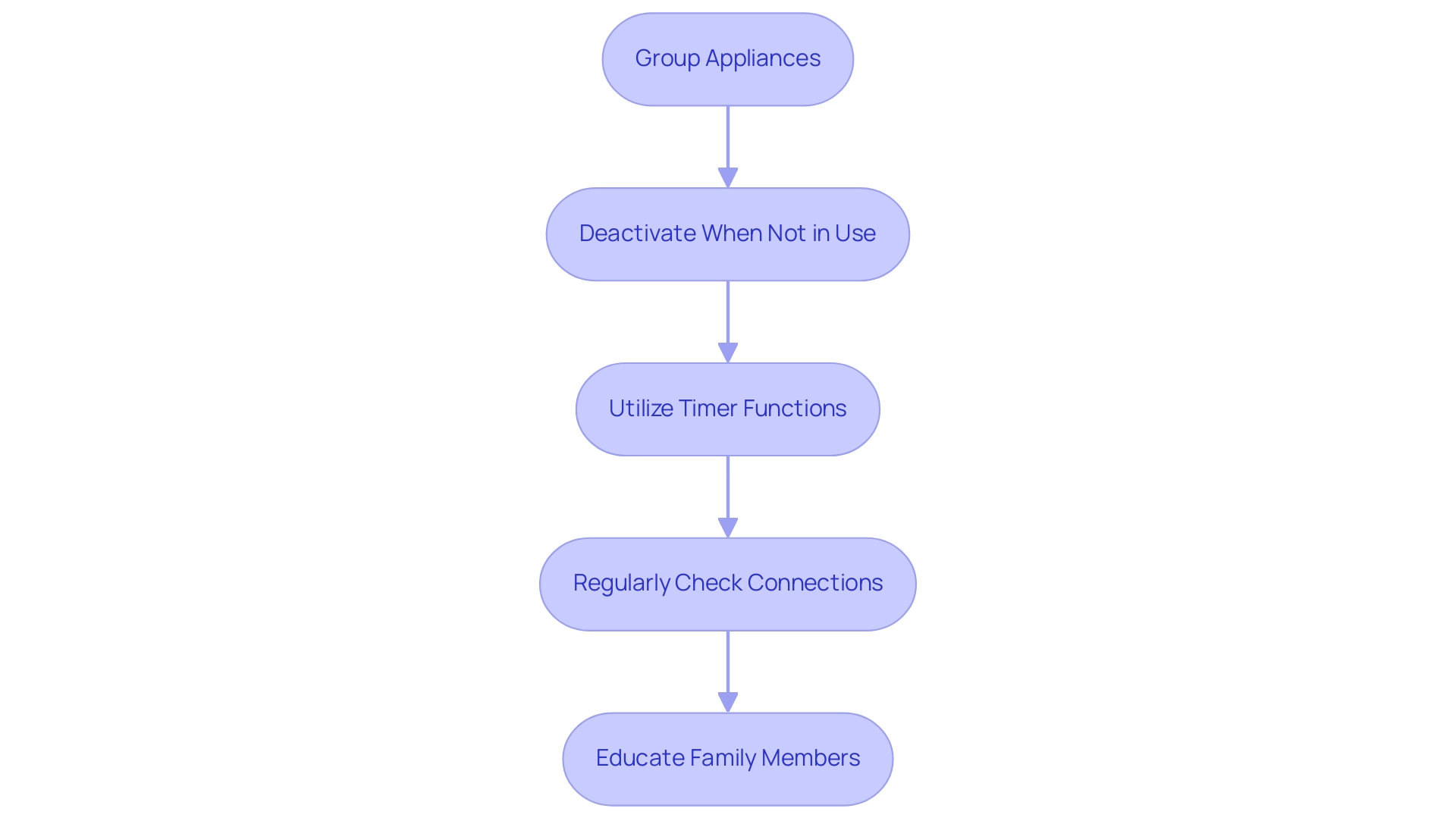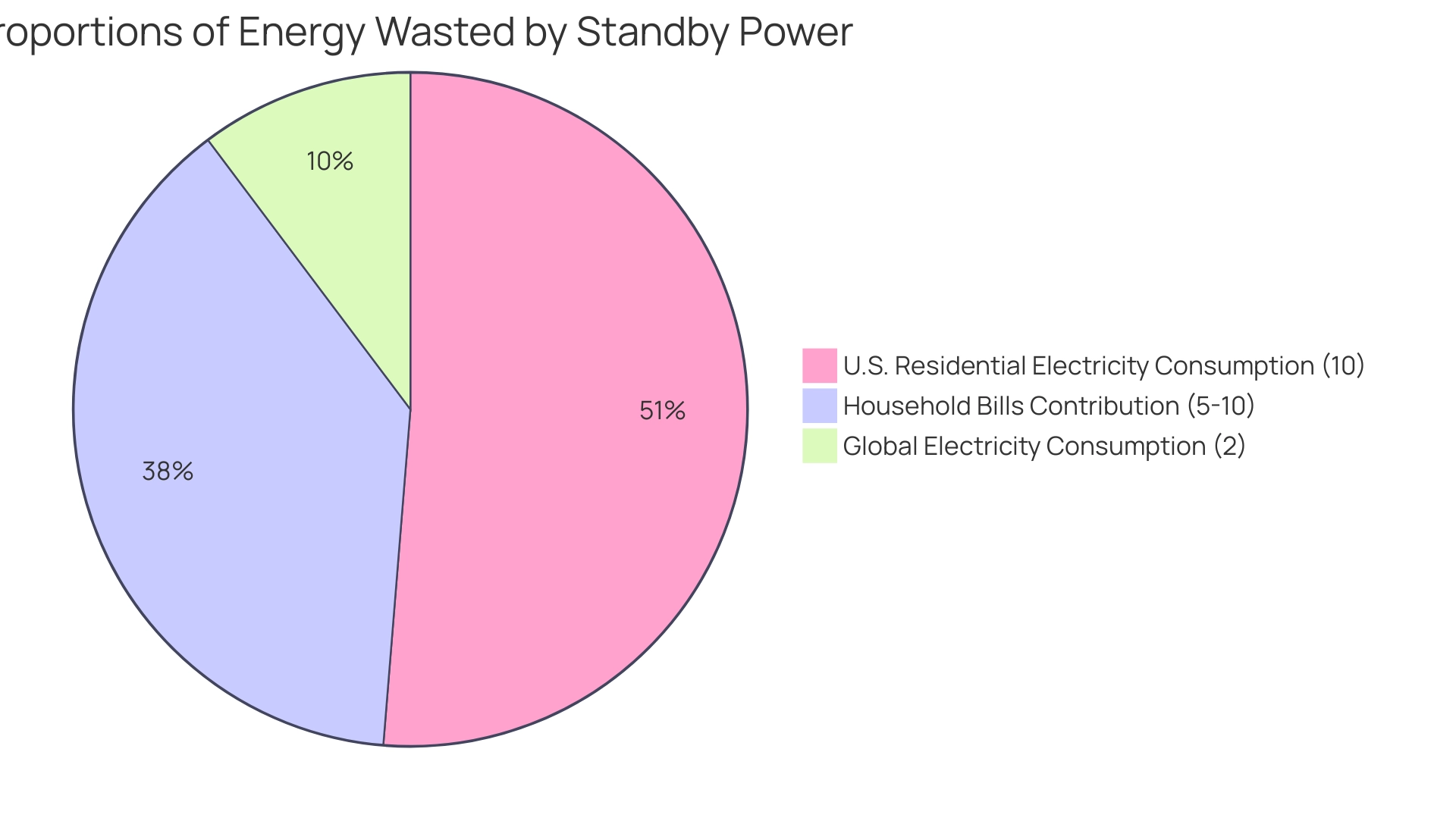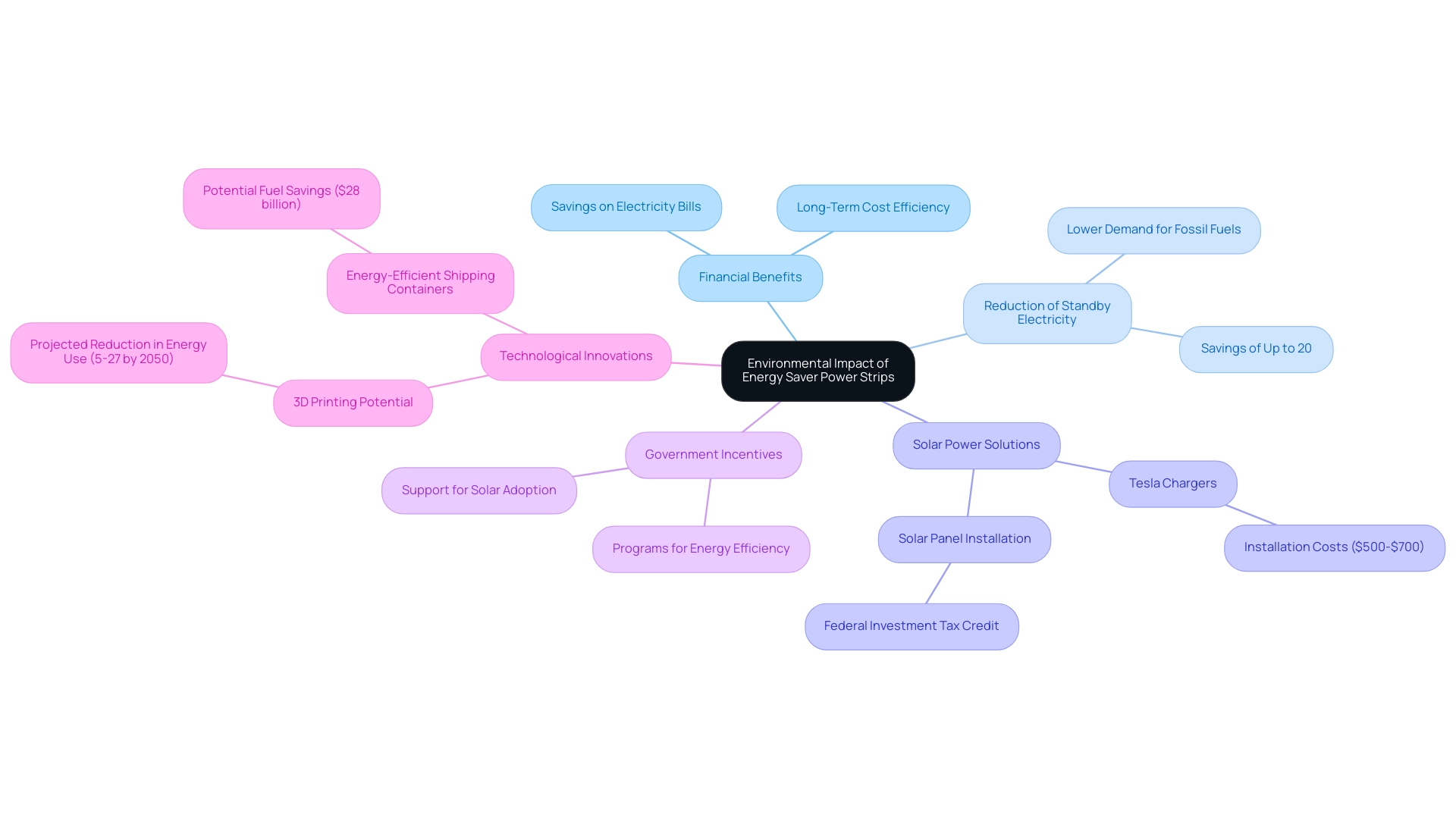Introduction
In a world where every penny counts and the environment is increasingly at risk, homeowners are seeking practical solutions to reduce energy consumption and lower their bills. Enter energy saver power strips, the unsung heroes of energy efficiency. These innovative devices not only combat phantom energy loss—where electronics continue to draw power even when not in use—but also empower homeowners to take control of their energy usage.
With features that automatically cut power to idle devices and smart technology for easy management, these power strips can lead to significant savings. As the article delves into the benefits, features, and effective usage of energy saver power strips, it becomes clear that making this simple switch can have a profound impact on both finances and the planet.
Understanding Energy Saver Power Strips: A Key to Energy Efficiency
Energy-saving outlets, frequently called smart outlets, are a novel approach for decreasing consumption in your home, especially when paired with an energy saver power strip. These sophisticated bands are created to automatically sever supply to gadgets that are not in active use, effectively addressing the issue of phantom consumption—resources utilized by electronics that, while switched off, stay connected. Unlike conventional surge protectors that constantly provide electricity, the energy saver power strip intelligently recognizes when gadgets enter standby mode and halts the energy flow.
Furthermore, it’s essential to mention that remote control extension cords, although handy, use a minor quantity of electricity to stay responsive to the remote, which is a factor for overall savings.
A practical example of the effectiveness of the energy saver power strip can be seen in the case study titled “Smart Power Strip Installation.” This research shows how setting up an energy saver power strip in a household can help reduce costs and enhance efficiency by addressing vampire loads, which consume resources even when appliances are in sleep mode. The result demonstrated that an energy saver power strip can disconnect electricity to devices in standby mode, leading to lower usage.
With industrial monthly utility expenses averaging over $35,000, the potential for homeowners to achieve similar savings by using an energy saver power strip is significant. By adopting these smart technologies, homeowners not only improve their efficiency but also contribute to a greener future, reducing their electricity bills and minimizing their environmental impact.
Choosing the Right Energy Saver Power Strip: Essential Features to Consider
When it comes to selecting the appropriate energy-saving extension, monitoring specific key features can make all the difference:
- Surge Protection: Choose units equipped with surge protection to safeguard your equipment from unforeseen voltage spikes. Some models, like those from Belkin, even offer warranties for connected equipment, providing coverage of up to $300,000 against damage caused by surges or lightning strikes.
- Sockets: Ensure the extension has ample outlets to support all your gadgets, including USB ports for easy charging.
- Automatic Shutoff: Seek out bands that automatically terminate electricity when items are not in use. This feature helps you conserve power effortlessly, as Nathan Chandler points out,
> If you walk back into the room, the sensors detect your heat and stop the countdown.
This functionality is supported by intelligent energy strips’ unique circuitry, which can discern drops in consumption when devices switch to standby mode, effectively reducing vampire loads. - Smart Technology: Certain surge protectors feature intelligent functionalities, enabling you to operate them via a mobile application or even through voice commands, facilitating the management of your consumption from any location.
- Power Monitoring: Consider models that provide real-time power usage statistics. This feature not only helps you track your consumption but also showcases the savings you achieve over time. For example, the Mini Power Minder is a compact smart surge protector designed for smaller areas that utilizes a USB connection to monitor computer usage and disconnects from a secondary outlet when the computer is turned off, preventing waste in smaller setups.
By concentrating on these essential features and considering the viability of smart surge protectors as emphasized in recent projects, you can choose a device that perfectly aligns with your needs while maximizing your savings, all while contributing to a more sustainable home.
Maximizing Efficiency: How to Use Energy Saver Power Strips Effectively
Enhancing the effectiveness of your saver electrical devices is simpler than you may believe! Here are some friendly tips to help you save energy and lower those pesky bills:
-
Group Appliances: Keep it straightforward—connect items that you use together into the same extension. For instance, connect your TV, DVD player, and gaming console together. This way, you can easily turn them all off in one go! This practice can significantly reduce your overall energy consumption, similar to how the HVAC system run-time for vacant zones was reduced to nearly zero in university residence halls during a recent study.
-
Deactivate When Not in Use: Establish a routine to turn off the electrical unit when you leave or prepare for bed, particularly for items that aren’t required overnight. It’s a small step that can lead to significant savings.
-
Utilize Timer Functions: If your electrical extension comes with a timer, make use of it! Set it to turn off during those hours when items are just sitting around, like overnight or while you’re at work. Engineers have created full-size power strips with built-in timers that can be programmed to turn on only when users are typically at home. This design prevents equipment from consuming electricity when not required, helping you save on energy expenses.
-
Regularly Check Connections: Keep an eye on your devices’ connections. Ensure everything is connected correctly and that your surge protector is working as it should. This simple check can prevent potential issues down the line.
-
Educate Family Members: Share the love of resource efficiency with your family! Instruct everyone on how to utilize those saver outlets efficiently, ensuring everyone is aligned and helps in decreasing resource waste.
As Dr. Kurt Roth, Director of Building Technology, emphasizes, “Maximizing resource efficiency is crucial for sustainable living.” By applying these simple practices, you’ll not only enhance the advantages of your saver strips but also support a more sustainable home, ultimately resulting in reduced utility bills and a smaller carbon footprint.
The Hidden Costs of Standby Power: Why Energy Saver Power Strips Matter
Did you know that standby power, often dubbed phantom load, can account for a staggering 5% to 10% of your household utility bill? This phenomenon occurs when devices are plugged in but not actively in use—think of chargers left in outlets or electronics in standby mode. In fact, the International Energy Agency reported that wasted standby power accounts for around 2% of global electricity consumption and 10% of national residential electricity consumption.
While it may seem insignificant at first, these small amounts of wasted energy accumulate over time, leading to noticeable costs. For example, just one appliance drawing a mere 1 watt of standby power can cost you around $1 per year. Now, envision the effect when you have several gadgets spread across your home; the total can easily exceed $100 each year!
This issue is becoming increasingly relevant as the number of electronic gadgets in households continues to rise. Fortunately, energy saver power strips assist by effectively disconnecting electricity to inactive gadgets, enabling you to reduce expenses and minimize your carbon footprint simultaneously. Furthermore, taking into account that the typical U.S. household uses around 10,500 kilowatt-hours (kWh) of electricity annually, the financial effect of standby energy can differ greatly depending on the kind of residence, with single-family detached homes generally encountering greater standby expenses because of their larger number of appliances.
Environmental Impact: How Energy Saver Power Strips Contribute to Sustainability
Adopting an energy saver power strip is beneficial for both your finances and the ecosystem. These smart devices significantly cut standby electricity usage, assisting in lowering overall demand and reducing our dependence on fossil fuels, which aids in a reduction of greenhouse gas emissions. UL Environment emphasizes that even if an individual never dozes off before turning off the TV, a smart power strip can still provide savings of up to 20 percent—a significant contribution regarding the broader implications for sustainability.
Moreover, with the rise of solar power solutions, such as Tesla home chargers, which can cost around $500 to $700 for installation, and efficient solar panels, homeowners have more opportunities than ever to enhance their efficiency. Government programs, like the Federal Investment Tax Credit, can cover a significant portion of the costs associated with solar panel installation, making it easier for homeowners to adopt sustainable practices. Each small action counts; whether it’s unplugging devices, choosing energy-efficient products, or investing in solar solutions, every step contributes to a healthier planet.
In the context of global innovations, consider the potential of 3D printing technology, projected to reduce worldwide power consumption by 5-27% by 2050. This demonstrates that improvements in power efficiency can have far-reaching effects. Additionally, the practice of replacing the roof and wall panels on shipping containers with aluminum could save $28 billion in fuel, further emphasizing the importance of energy-efficient technologies.
With Microsoft’s carbon emissions rising by nearly 30% since 2020, the need for solutions like the energy saver power strip becomes even more critical. By adopting these devices, alongside solar energy systems and utilizing services for solar panel cleaning and battery storage options, homeowners are not just saving money; they are actively participating in creating a sustainable future, ensuring a cleaner environment for generations to come.
Conclusion
Switching to energy saver power strips represents a simple yet impactful step towards enhancing energy efficiency in homes. By effectively combating phantom energy loss, these smart devices can lead to significant reductions in electricity bills while also fostering a greener future. The features of surge protection, automatic shutoff, and energy monitoring not only protect devices but also provide homeowners with easy management tools that empower them to take control of their energy consumption.
The potential savings from adopting energy saver power strips cannot be overstated. With the average household wasting a considerable amount on standby power, implementing these strips can transform how energy is used in daily life. By grouping devices, utilizing timers, and educating family members about energy efficiency, every household can maximize the benefits of these power strips, creating a collective impact that extends beyond individual savings.
Moreover, embracing energy efficiency through these devices contributes to broader environmental goals. As homeowners reduce their reliance on fossil fuels and lower greenhouse gas emissions, they play a vital role in the global effort towards sustainability. Each small action, whether it’s cutting off power to idle devices or investing in renewable energy solutions, adds up to significant change. Energy saver power strips not only help save money but also ensure a cleaner, healthier planet for future generations.
